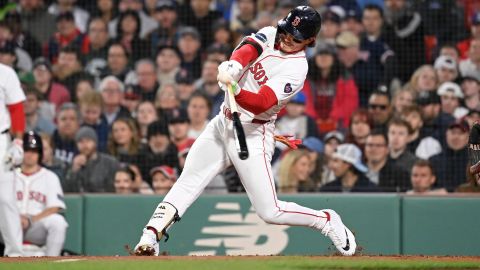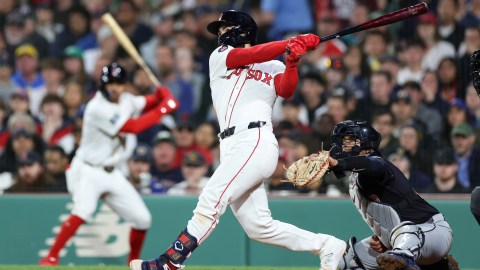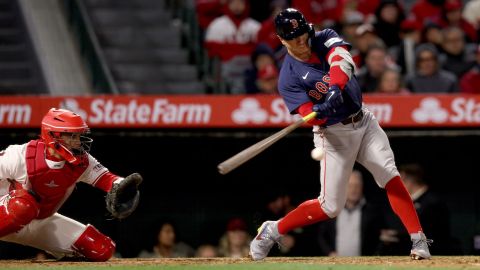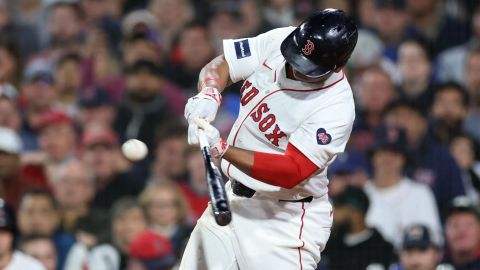John Farrell‘s tenure with the Boston Red Sox has come to an end after four years guiding a pitching staff filled with star power. But the paths he sent those stars down will remain. It will be up to those hurlers and Farrell’s successor to continue that route, or plot in a new one in a bid for sustained success.
With help from fangraphs.com, and what we saw this past year with the naked eye, here is a quick glance at the progression of a handful of Farrell’s starting pitchers in Boston:
Jon Lester
Under Farrell, the dynamic left-hander has cut down on the use of his fastball. When he emerged from the Red Sox’ system that was his primary weapon, but it is being replaced more and more by the cutter and, in 2010, a changeup and a sinker.
While Lester’s average fastball velocity actually dipped this year, the speed and effectiveness of his cutter continued to rise. He used it 22 percent of the time, and his starts were often dictated by his ability to command that pitch. Similarly, the changeup was utilized 11.6 percent of the time, up from 6.6 percent the year before.
As the year wore on Lester also mixed in a sinker he had been working on and found success there, as evidenced by a sharp increase in the percentage of ground balls.
When Lester first toiled under Farrell in 2007 he saw just 34.4 percent of balls in play being hit on the ground, compared to 46.9 percent in the air. In 2010 those numbers were 53.6 and 29.6, respectively.
Whenever Farrell was asked about Lester, the word “cutter” would inevitably be one of the first to come up. So much of Lester’s future success will center around his command of that pitch, which he honed under Farrell.
Clay Buchholz
The biggest change for Buchholz since he debuted with the Red Sox in 2007 is the development of his slider. He once rarely used it and even when he did would rarely find as much success as his potentially knee-buckling curve and above-average changeup.
Buchholz’s use of the slider has increased from 6.5 percent to 18.7 percent in those four seasons. More notably has been the eye-popping increase in the pitch’s speed. He threw his slider at 81.4 mph in 2008. It averaged out to 90 mph this year.
The effectiveness of the pitch has caused the righty to put the curveball back in his pocket a bit more and slightly cut back on the use of the changeup. The fastball remains a solid option and was the pitch with which he had incredible success in his breakout 2010 campaign.
Buchholz has been compared at times to Josh Beckett in terms of the arsenal and general stuff. As is the case with Beckett, Farrell has stressed command of the fastball first and foremost. But on days when it’s off it helps to have a pretty nasty slider at the ready.
Josh Beckett
As mentioned, Beckett lives and dies on whether he can put the fastball where he wants it. In Farrell’s first two seasons with the Sox, Beckett found more success with that pitch than he ever had before while still throwing it less often than he had in his final three seasons in Florida.
Beckett, too, has attempted under Farrell to work in the cutter (particularly to lefties), bumping up its frequency more than 10 percent in 2010, while dropping the heater to an all-time low of 55.2 percent. Some of that may have had to do with the fact that Beckett’s velocity was down more than 1 mph from the time he started in Boston, but every other pitch saw a similar decline so it’s hard to tell.
Daisuke Matsuzaka
He came into Farrell’s fold with a rumored arsenal of several pitches, but Matsuzaka is down to just about four after nearly phasing out the curveball and the split-fingered fastball. He threw both just 0.6 percent of the time in 2010.
With Matsuzaka it has always been about relying more on the fastball, unlike some of his counterparts. He has bumped up the usage of that pitch a full five percent since 2008 while sacrificing his slider a bit and the aforementioned curve and splitter almost completely.
Matsuzaka’s best pitch in terms of its value in 2010 was the cutter. Given the fact that Lester and Beckett have also jumped on board with that pitch, Farrell’s successor ought to know how well it works, and how often to use it to get the most out of Matsuzaka.



